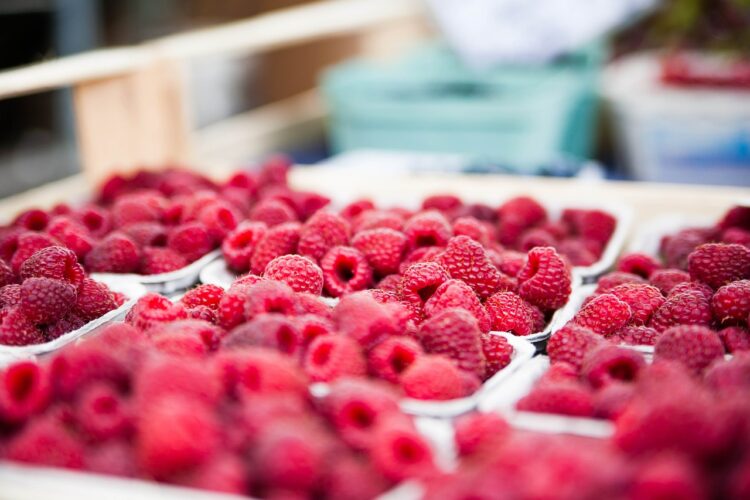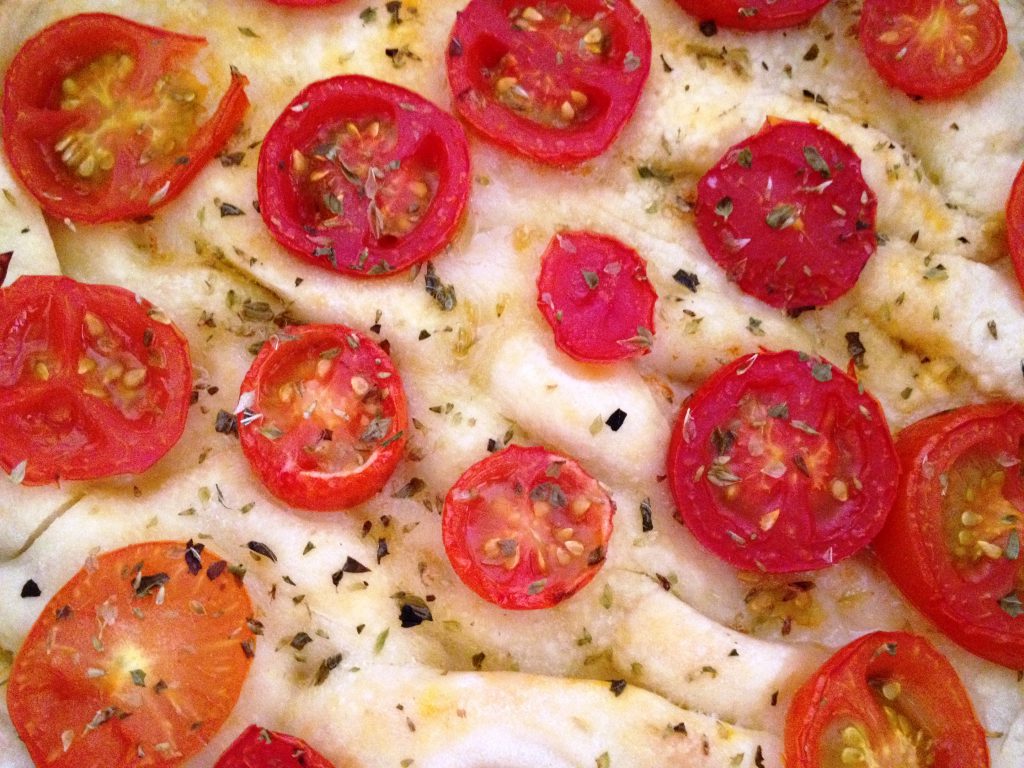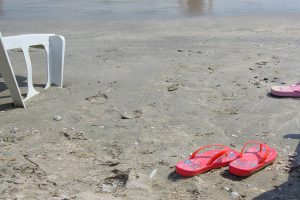Freezing fruits and vegetables for "plan-overs"
Let me tell you, I recently stumbled upon a few great resources for freezing fruits and vegetables.
Planning my meals has been a top priority, but with the abundance of local North Carolina produce here in the summer, it has become increasingly important to me to make the most out of my purchases.
Before I buy fruits or vegetables for the week at my local farmers’ market or the grocery store, I make a plan for what I’ll use for the week.
If the price is good, and the quality is what I want, I‘ll buy extra and make a plan to freeze it. I know I’ll end up using them in future recipes so it makes sense to me to make it part of my “plan-overs”.
One resource from Food and Health Communications, https://foodandhealth.com/freezer-magic-8-freezing-tips/, has given me a few pointers. Here are a couple I found especially important:
- Freeze ripe, high-quality fruits and vegetables. Freezing won’t magically fix any rot, lack of ripeness, or mold — it will just preserve those pesky problems. (Tip 1)

- Many vegetables need to be “blanched” or partially cooked before they are frozen. This will ensure good quality, color, and texture. (Tip 5)
- Freeze your produce in sealed bags or containers. Bags are the preferred method because you can see what is in them and they take up less space. It is important to fold or roll items in the bags so that you reduce the amount of air in the bags. The less air, the better! (Tip 6)
I’ve learned it is especially important to label and date whatever it is you freeze. Otherwise you might not know what it is. Also, remember to use it as part of your “plan-over” meals so you can avoid forgetting about them in the depths of the freezer (I might have done this a few times before!) Happy freezing!
Emily
Quick and Healthy Homemade Pizza
When my children were young, they always asked for pizza, so I decided that we would start making our own. Ours were not only healthier pizzas, but also more economical. This also gave us an opportunity to “cook” together, providing us with another fun family activity.
Here are some of my suggestions: Start with a whole grain English muffin, tortilla, or rice cake. Top with pizza or spaghetti sauce (the spaghetti sauce is actually lower in price). This is also a great way to use leftover spaghetti sauce, meats, and vegetables. Top the crust with ham, chicken, ground meat, or just go meatless. Add some broccoli, spinach, mushrooms, black olives, green peppers, and/or pineapple. Top with a low fat cheese, such as cheddar or mozzarella. You are now ready to bake your pizza.
 Let the children get involved in making their own pizzas, under your supervision, if needed. Now sit down together and enjoy a very delicious lunch or snack. If you are not sure how to make your own mini pizzas, follow the recipe below:
Let the children get involved in making their own pizzas, under your supervision, if needed. Now sit down together and enjoy a very delicious lunch or snack. If you are not sure how to make your own mini pizzas, follow the recipe below:
Quick Pizza
Makes 2 servings
Ingredients:
2 slices whole-wheat bread or English muffin, halved
½ cup low-sodium spaghetti sauce
½ cup pineapple tidbits in own juice, drained
½ cup lean diced ham
¼ cup reduced fat mozzarella cheese, shredded
Directions:
1. Toast bread or English muffin until very lightly brown
2. Preheat oven to 350 degrees
3. Place toasted bread or English muffin on a baking sheet
4. Spread ½ of the spaghetti sauce onto each of the slices
5. Place ½ of the pineapple tidbits and ½ of the diced ham on top
6. Sprinkle 2 tablespoons of cheese on each slice
7. Bake at 350 degrees for 4 to 6 minutes or until cheese melts
-Judy
NC EFNEP's Peach Pointers
North Carolina peaches are a great summertime fruit. They are most abundant and least expensive June through September. Learn how to select, store, and prepare them in this short video.
https://youtu.be/_37xcn1ImSM
For the recipes featured in the video, check the links below:
- Peach Salsa: http://www.great-salsa.com/peachsalsarecipes.html
- Grilled Chicken with Balsamic Peach Marinade: http://www.food.com/recipe/grilled-chicken-with-balsamic-peach-marinade-133801
- Spinach Salad with Peaches and Pecans: http://allrecipes.com/recipe/spinach-salad-with-peaches-and-pecans/kitchenview.aspx
Hit the beach, keep it safe
My favorite beach is Emerald Isle. I love having a picnic lunch while I am there. Here are some of the ways I keep my family safe:
1. My lunch usually isn’t anything fancy. It usually consists of finger foods such as cucumbers, cantaloupe, watermelon or carrots. I always include wraps such as tuna salad or egg salad, nothing that will melt, and I always carry partially frozen bottles of water with me.
2. I don’t want any ants, horse flies, sea gulls, bees and certainly no food poisoning to ruin  my perfect day. So I always try to plan ahead when I am going to the beach, so that I don’t forget any essential items that I might need for a safe picnic such as a cooler with ice, clean utensils, storage bags or containers for leftovers, paper towels, table cloth and trash bags. Table cloths are much easier to wash than blankets.
my perfect day. So I always try to plan ahead when I am going to the beach, so that I don’t forget any essential items that I might need for a safe picnic such as a cooler with ice, clean utensils, storage bags or containers for leftovers, paper towels, table cloth and trash bags. Table cloths are much easier to wash than blankets.
3. I use disposable wet wipes or hand sanitizer to clean my hands before I touch food because running water is not available. I always plan some games for the children to play after they finish eating.
4. I don’t leave foods out in the sun. I position the cooler behind my beach chair in the shade. I serve the food quickly from the cooler and return it fast.
For more tips to keep your family safe visit foodsafety.gov
Writing this blog makes me want to pack my cooler now and head to the beach! See you there!
Susan
Don't Dread the Road Trip
A long time ago, I used to dread long road trips especially when my children were much younger. However, after years of experience and many miles later, I now love road trips and look forward to our next one.

If there’s one thing I’ve learned it’s that I need to plan ahead especially when it comes to eating during our travel. Although it may seem easier to buy food from a convenience store or a drive-thru along the trip, it can get expensive. Not to mention, most of those foods are high in fat, sodium, and calories. Instead, I like to bring our own snacks because it’s healthier and saves us money and time.
I prefer to pack foods that don’t require refrigeration. However, when I do pack perishable items, I store them in a cooler with lots of ice packs or frozen water bottles (this is great in the summertime). Keeping food safe is a vital part of planning a road trip…after all, we’re on a journey to have fun and make memories with the kids and not end up at the Urgent Care.
Foods that need to be chilled include:
- Deli meat or lunchmeat
- Anything made with egg, tuna, chicken, ham, seafood (or other animal protein)
- Cheese, yogurt, and other dairy products
- Cut up fruit and vegetables
- Homemade fruit and vegetable dips
Foods that can be left out include:
- Bread
- Peanut butter sandwiches (I cut them up to make it easier to eat)
- Whole fruit (Juicier fruits, like mango, oranges, kiwi, watermelon and others can get messy)
- Dried fruit
- Nuts and seeds (I like to make my own trail mix)
- Crackers and other dry packaged snacks (I avoid anything that melts like chocolate)
If your kids are like mine, they can devour an entire bag of anything if given the chance. This is why I divide the snacks into single servings and store them in sandwich bags. Each child now has his own treat that is easily accessible and just the right amount. I also tend to pack water rather than sugar sweetened drinks. Not only is it healthy and refreshing but if it spills, it won’t stain!
And finally, I always pack moist hand wipes (lots of it), paper towels, trash bags, barf bags (for the times you least expect it), and disinfectant spray (trust me, you’ll need it).
Road trips are supposed to be fun and memorable when planned well. Save money and time by packing your own healthy snacks. And reduce your risk of foodborne illness by handling and keeping your food safe.
-Lisa
Visit FoodSafety.gov for more information